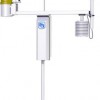 Weather is a prominent factor in the success or failure of agricultural enterprises, and the technology is improved and less expensive, so many farmers are installing farm-based weather stations for tracking weather conditions, scheduling irrigation, make decisions related to cold protection, and accomplish other tasks. But management decisions must be based on high-quality observations. Sensors must meet accepted minimum accuracy standards, the station must be sited properly and well-maintained.
Weather is a prominent factor in the success or failure of agricultural enterprises, and the technology is improved and less expensive, so many farmers are installing farm-based weather stations for tracking weather conditions, scheduling irrigation, make decisions related to cold protection, and accomplish other tasks. But management decisions must be based on high-quality observations. Sensors must meet accepted minimum accuracy standards, the station must be sited properly and well-maintained.
This 5-page fact sheet provides farmers with basic guidelines for installing and maintaining a weather station. Written by Clyde W. Fraisse, George W. Braun, William R. Lusher, and Lee R. Staudt, and published by the UF Department of Agricultural and Biological Engineering, April 2015.
http://edis.ifas.ufl.edu/ae502
Author: dihagan
Integrating Critical Thinking into Extension Programming #1: Critical Thinking Defined
 This 3-page fact sheet, the first in a series on integrating critical thinking into extension programming, defines critical thinking to assist extension professionals in better understanding the concept. Written by Alexa J. Lamm, and published by the UF Department of Agricultural Education and Communication, April 2015.
This 3-page fact sheet, the first in a series on integrating critical thinking into extension programming, defines critical thinking to assist extension professionals in better understanding the concept. Written by Alexa J. Lamm, and published by the UF Department of Agricultural Education and Communication, April 2015.
http://edis.ifas.ufl.edu/wc206
Integrating Critical Thinking into Extension Programming #2: Developing Critical Thinking Skills
 This 3-page fact sheet is the second in a series on integrating critical thinking into Extension programming, and examines the virtues of critical thinking to offer suggestions for integrating activities that encourage critical thinking into Extension programming. Written by Alexa J. Lamm, and published by the UF Department of Agricultural Education and Communication, April 2015.
This 3-page fact sheet is the second in a series on integrating critical thinking into Extension programming, and examines the virtues of critical thinking to offer suggestions for integrating activities that encourage critical thinking into Extension programming. Written by Alexa J. Lamm, and published by the UF Department of Agricultural Education and Communication, April 2015.
http://edis.ifas.ufl.edu/wc207
Integrating Critical Thinking into Extension Programming #3: Critical Thinking Style
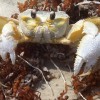 This 3-page fact sheet is the third in a series on integrating critical thinking into Extension programming. It introduces the concept of critical thinking style and describes the two styles of critical thinking. Written by Alexa J. Lamm, and published by the UF Department of Agricultural Education and Communication, April 2015.
This 3-page fact sheet is the third in a series on integrating critical thinking into Extension programming. It introduces the concept of critical thinking style and describes the two styles of critical thinking. Written by Alexa J. Lamm, and published by the UF Department of Agricultural Education and Communication, April 2015.
http://edis.ifas.ufl.edu/wc208
Sting Nematode Belonolaimus longicaudatus Rau (Nematoda: Tylenchida: Belonolaimidae)
 Among the most destructive plant-parasitic nematodes to a wide range of plants, Belonolaimus longicaudatus damages plant roots. When the plants cannot take up water and nutrients from the soil, they become stunted, wilt, and with severe infestation, die. Florida is considered to be the point-of-origin for Belonolaimus longicaudatus and therefore this nematode exhibits a great deal of diversity in morphology, host preference, and genetics in our region. This 6-page fact sheet was written by W. T. Crow, and published by the UF Department of Entomology and Nematology, March 2015. (Photo W. T. Crow, UF/IFAS)
Among the most destructive plant-parasitic nematodes to a wide range of plants, Belonolaimus longicaudatus damages plant roots. When the plants cannot take up water and nutrients from the soil, they become stunted, wilt, and with severe infestation, die. Florida is considered to be the point-of-origin for Belonolaimus longicaudatus and therefore this nematode exhibits a great deal of diversity in morphology, host preference, and genetics in our region. This 6-page fact sheet was written by W. T. Crow, and published by the UF Department of Entomology and Nematology, March 2015. (Photo W. T. Crow, UF/IFAS)
http://edis.ifas.ufl.edu/in1080
Anagyrus pseudococci Girault (Insecta: Hymenoptera: Encyrtidae)
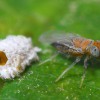 Anagyrus pseudococci is an economically important biological control agent commonly used against the vine mealybug (which infests wine grapes) and the citrus mealybug. It is a solitary, internal parasitoid and lays one egg per host, with the larva developing inside the host’s body. The wasps may be commercially reared and distributed inside mummies, and they will emerge within 1-5 days after delivery. Application involves placing a bottle containing the mummies in a dry spot of the crop and allowing the adults to emerge. This 5-page fact sheet was written by Theresa Chormanski and Ronald D. Cave, and published by the UF Department of Entomology and Nematology, March 2015. (Photo: Kent M. Dane)
Anagyrus pseudococci is an economically important biological control agent commonly used against the vine mealybug (which infests wine grapes) and the citrus mealybug. It is a solitary, internal parasitoid and lays one egg per host, with the larva developing inside the host’s body. The wasps may be commercially reared and distributed inside mummies, and they will emerge within 1-5 days after delivery. Application involves placing a bottle containing the mummies in a dry spot of the crop and allowing the adults to emerge. This 5-page fact sheet was written by Theresa Chormanski and Ronald D. Cave, and published by the UF Department of Entomology and Nematology, March 2015. (Photo: Kent M. Dane)
http://edis.ifas.ufl.edu/in1081
Zombie Fly (suggested common name) Apocephalus borealis Brues (Insecta: Diptera: Phoridae)
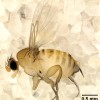 The zombie fly is primarily a parasitoid of bumble bees and wasps in North America. In 2012, Dr. John Hafernik and his colleagus at San Francisco State University discovered that Apocephalus borealis also parasitizes honey bees. Parasitized honey bees show zombie-like behavior by leaving their hives at night and are often attracted to nearby lights where they show disoriented behavior and die in a few hours. This 5-page fact sheet was written by Nicole A. Casuso, Ashley N. Mortensen, and James D. Ellis, and published by the UF Department of Entomology and Nematology, October 2014. (Photo: Jessica Andrieux, CC SA-BY 2.5)
The zombie fly is primarily a parasitoid of bumble bees and wasps in North America. In 2012, Dr. John Hafernik and his colleagus at San Francisco State University discovered that Apocephalus borealis also parasitizes honey bees. Parasitized honey bees show zombie-like behavior by leaving their hives at night and are often attracted to nearby lights where they show disoriented behavior and die in a few hours. This 5-page fact sheet was written by Nicole A. Casuso, Ashley N. Mortensen, and James D. Ellis, and published by the UF Department of Entomology and Nematology, October 2014. (Photo: Jessica Andrieux, CC SA-BY 2.5)
http://edis.ifas.ufl.edu/in1063
4-H School Enrichment: A Guide for 4-H Faculty and Staff
 School Enrichment is a partnership between the University of Florida/IFAS Extension Service and a school district to provide educational content in various subject areas. Extension values its relationship with the schools and welcomes the opportunity to provide research-based curricula for classroom use. This 8-page fact sheet includes a desciption of 4-H School Enrichment and its benefits, procedures for starting and scheduling a program, resources and guidelines, and tips for promoting involvement to other 4-H programs. Adapted for use in Florida by Tracy A. Tesdall and published by the UF Department of 4-H Youth Development, April 2015.
School Enrichment is a partnership between the University of Florida/IFAS Extension Service and a school district to provide educational content in various subject areas. Extension values its relationship with the schools and welcomes the opportunity to provide research-based curricula for classroom use. This 8-page fact sheet includes a desciption of 4-H School Enrichment and its benefits, procedures for starting and scheduling a program, resources and guidelines, and tips for promoting involvement to other 4-H programs. Adapted for use in Florida by Tracy A. Tesdall and published by the UF Department of 4-H Youth Development, April 2015.
http://edis.ifas.ufl.edu/4h324
Health Benefits and Medicinal Value of Honey
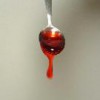 Honey has been used for medicinal purposes for thousands of years. It is rich in sugars such as glucose and fructose, but it also contains small amounts of vitamins, minerals, amino acids, and antioxidants such as phenolic acids and flavonoids. These nutrients help to make honey a unique, natural health product. Its market niche as a health product is growing, and current research supports the potential of honey as a medicinal product. This 3-page fact sheet describes health aspects of honey deriving from the floral source and color, beneficial compounds, anti-microbial properties and anti-inflammatory properties. Written by Sara Marshall, Liwei Gu, and Keith R. Schneider, and published by the UF Department of Food Science and Human Nutrition, April 2015.
Honey has been used for medicinal purposes for thousands of years. It is rich in sugars such as glucose and fructose, but it also contains small amounts of vitamins, minerals, amino acids, and antioxidants such as phenolic acids and flavonoids. These nutrients help to make honey a unique, natural health product. Its market niche as a health product is growing, and current research supports the potential of honey as a medicinal product. This 3-page fact sheet describes health aspects of honey deriving from the floral source and color, beneficial compounds, anti-microbial properties and anti-inflammatory properties. Written by Sara Marshall, Liwei Gu, and Keith R. Schneider, and published by the UF Department of Food Science and Human Nutrition, April 2015.
http://edis.ifas.ufl.edu/fs267
Breast Cancer: Neoadjuvant Chemotherapy
 Neoadjuvant, or preoperative, chemotherapy is the use of chemotherapy to treat breast cancer before surgery. If your doctors have suggested that you consider this treatment, you probably have questions about it. This 4-page fact sheet provides an overview of chemotherapy treatment, potential side effects, and major benefits. Written by Barbara F. Shea and Martha C. Monroe, and published by the UF Department of Family Youth and Community Sciences, April 2015. (Photo: iStock/Thinkstock.com)
Neoadjuvant, or preoperative, chemotherapy is the use of chemotherapy to treat breast cancer before surgery. If your doctors have suggested that you consider this treatment, you probably have questions about it. This 4-page fact sheet provides an overview of chemotherapy treatment, potential side effects, and major benefits. Written by Barbara F. Shea and Martha C. Monroe, and published by the UF Department of Family Youth and Community Sciences, April 2015. (Photo: iStock/Thinkstock.com)
http://edis.ifas.ufl.edu/fy897
Preventing Foodborne Illness: Cyclospora cayetanensis
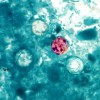 Cyclospora cayetanensis is a microscopic, spore-forming, intestinal protozoan parasite and a known cause of the gastrointestinal infection cyclosporiasis, often referred to as “traveler’s diarrhea” for its prevalence among visitors to regions where the species is endemic. These organisms have a protective covering that makes them resistant to disinfectants and that gives Cyclospora the ability to survive outside of hosts for extended periods. The incidence of cyclosporiasis has been increasing worldwide, with several documented cases in the United States and Canada. This 4-page fact sheet was written by Keith R. Schneider, Rachael Silverberg, Susie Richardson, and Renée Goodrich Schneider, and published by the UF Department of Food Science and Human Nutrition, March 2015. (Photo: CDC/DPDx – Melanie Moser)
Cyclospora cayetanensis is a microscopic, spore-forming, intestinal protozoan parasite and a known cause of the gastrointestinal infection cyclosporiasis, often referred to as “traveler’s diarrhea” for its prevalence among visitors to regions where the species is endemic. These organisms have a protective covering that makes them resistant to disinfectants and that gives Cyclospora the ability to survive outside of hosts for extended periods. The incidence of cyclosporiasis has been increasing worldwide, with several documented cases in the United States and Canada. This 4-page fact sheet was written by Keith R. Schneider, Rachael Silverberg, Susie Richardson, and Renée Goodrich Schneider, and published by the UF Department of Food Science and Human Nutrition, March 2015. (Photo: CDC/DPDx – Melanie Moser)
http://edis.ifas.ufl.edu/fs130
Introduction to Social Network Research: General Introduction and Major Terminology
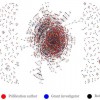 Social networks play an important role in the functioning of society and have an important effect on the actions of an individual or organization. It is very important for Extension educators to understand the networks of their clientele in order to perform better and develop more impactful Extension programming for their target audiences. This 5-page fact provides a brief description of network concepts and the terminology used in network studies, so that Extension educators may be more comfortable interpreting and using the results of SNA research to improve the efficiency and productivity of Extension organizations. Written by Anil Kumar Chaudhary and Laura A. Warner, and published by the UF Department of Agricultural Education and Communication, February 2015.
Social networks play an important role in the functioning of society and have an important effect on the actions of an individual or organization. It is very important for Extension educators to understand the networks of their clientele in order to perform better and develop more impactful Extension programming for their target audiences. This 5-page fact provides a brief description of network concepts and the terminology used in network studies, so that Extension educators may be more comfortable interpreting and using the results of SNA research to improve the efficiency and productivity of Extension organizations. Written by Anil Kumar Chaudhary and Laura A. Warner, and published by the UF Department of Agricultural Education and Communication, February 2015.
http://edis.ifas.ufl.edu/wc195
Introduction to Social Network Research: Application of Social Network Analysis in Extension
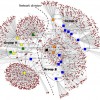 Viewed from a network perspective, we are all part of a network of relationships that is interwoven like a fishing net, providing both opportunities for and constraints on our behavior. Social network analysis (SNA) is a new approach to defining and describing society and its organizations and to assessing the impact of organizational structures. This 4-page fact sheet introduces Extension educators to possible ways to apply SNA in their work to plan and evaluate programs in a more efficient way. Written by Anil Kumar Chaudhary and Laura A. Warner, and published by the UF Department of Agricultural Education and Communication, February 2015.
Viewed from a network perspective, we are all part of a network of relationships that is interwoven like a fishing net, providing both opportunities for and constraints on our behavior. Social network analysis (SNA) is a new approach to defining and describing society and its organizations and to assessing the impact of organizational structures. This 4-page fact sheet introduces Extension educators to possible ways to apply SNA in their work to plan and evaluate programs in a more efficient way. Written by Anil Kumar Chaudhary and Laura A. Warner, and published by the UF Department of Agricultural Education and Communication, February 2015.
http://edis.ifas.ufl.edu/wc196
Introduction to Social Network Research: Brokerage Typology?
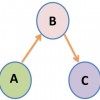 Brokerage occurs constantly in our daily lives. You, an Extension educator, want to deliver a financial management program in two neighborhoods, A and B. Neighborhood A needs help immediately, but you have no connections there. You do have connections in the other neighborhood, and you know that a family in Neighborhood A has friends in Neighborhood B. In this example, the Neighborhood A family can be a broker to help you deliver a program in Neighborhood B. Extension educators can use brokerage typology to understand how information and resources flow among their target audiences, and by identifying the brokers in their local communities, to increase the connectedness of communities and expand the reach of Extension programs to a larger population. This 5-page fact sheet was written by Anil Kumar Chaudhary and Laura A. Warner, and published by the UF Department of Agricultural Education and Communication, March 2015.
Brokerage occurs constantly in our daily lives. You, an Extension educator, want to deliver a financial management program in two neighborhoods, A and B. Neighborhood A needs help immediately, but you have no connections there. You do have connections in the other neighborhood, and you know that a family in Neighborhood A has friends in Neighborhood B. In this example, the Neighborhood A family can be a broker to help you deliver a program in Neighborhood B. Extension educators can use brokerage typology to understand how information and resources flow among their target audiences, and by identifying the brokers in their local communities, to increase the connectedness of communities and expand the reach of Extension programs to a larger population. This 5-page fact sheet was written by Anil Kumar Chaudhary and Laura A. Warner, and published by the UF Department of Agricultural Education and Communication, March 2015.
http://edis.ifas.ufl.edu/wc197
Getting Started in the 4-H Embryology Project: Tips for 4-H Agents and Teachers
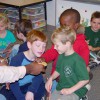 Usually considered an enrichment project for classrooms, the 4-H Embryology Project can also be modified for club or individual use. In it, young people use an incubator to grow avian embryos (inside fertile eggs) through the hatching process. Students learn basic biology and life science while they eagerly look forward to hatching chicks. This 5-page fact sheet describes the necessary equipment and other resources and provides tips and suggestions to increase the hatchability of fertile avian eggs. Written by Marcus Boston, Chris Decubellis, and Judith Levings, and published by the UF Department of 4-H Youth Development, April 2015. (Photo: Marcus Boston, UF/IFAS)
Usually considered an enrichment project for classrooms, the 4-H Embryology Project can also be modified for club or individual use. In it, young people use an incubator to grow avian embryos (inside fertile eggs) through the hatching process. Students learn basic biology and life science while they eagerly look forward to hatching chicks. This 5-page fact sheet describes the necessary equipment and other resources and provides tips and suggestions to increase the hatchability of fertile avian eggs. Written by Marcus Boston, Chris Decubellis, and Judith Levings, and published by the UF Department of 4-H Youth Development, April 2015. (Photo: Marcus Boston, UF/IFAS)
http://edis.ifas.ufl.edu/4h367
Understanding Nitrogen Availability from Applications of Anaerobically Digested Beef-Cattle Manure in Florida Sandy Soil
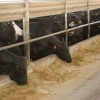 Anaerobic digestion of livestock manure is a microbe-mediated process carried out in vessels or tanks, where the livestock wastes are digested slowly in environment absent of oxygen. The main products are biogas, anaerobically digested liquid (ADL), and solid (ADS), which can be land-applied as an organic soil amendment or a source of plant nutrients. This 4-page fact sheet provides research-based information about using anaerobically digested beef-cattle manure as an organic source of nitrogen for supplementing crop nutrition in Florida sandy soils, including initial N concentration, application timing, rate of application, and method of application. Written by Rishi Prasad and George Hochmuth, and published by the UF Department of Soil and Water Science, April 2015. (Photo: George Hochmuth, UF/IFAS)
Anaerobic digestion of livestock manure is a microbe-mediated process carried out in vessels or tanks, where the livestock wastes are digested slowly in environment absent of oxygen. The main products are biogas, anaerobically digested liquid (ADL), and solid (ADS), which can be land-applied as an organic soil amendment or a source of plant nutrients. This 4-page fact sheet provides research-based information about using anaerobically digested beef-cattle manure as an organic source of nitrogen for supplementing crop nutrition in Florida sandy soils, including initial N concentration, application timing, rate of application, and method of application. Written by Rishi Prasad and George Hochmuth, and published by the UF Department of Soil and Water Science, April 2015. (Photo: George Hochmuth, UF/IFAS)
http://edis.ifas.ufl.edu/ss637
Not All Landscape Palm Fertilizers Are Created Equal
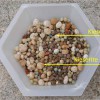 Palms are widely planted in Florida landscapes. Their bold leaf textures create a tropical or Mediterranean look that is highly desired by residents and tourists alike. But palms have very high nutritional requirements, and deficiencies of any element can result in conspicuous and unattractive symptoms on their large leaves. UF/IFAS research shows that the most effective fertilizer has 100% of the N, K, Mg, and B sources in slow-release or controlled-release form and that all of the Mn, Fe, Zn, and Cu sources should be water soluble. This 4-page fact sheet explains the reasons for this recommendation and how to ensure that you have a formulation that will be effective. Written by Timothy K. Broschat, and published by the UF Department of Environmental Horticulture, March 2015. (Photo Credit: T.K. Broschat)
Palms are widely planted in Florida landscapes. Their bold leaf textures create a tropical or Mediterranean look that is highly desired by residents and tourists alike. But palms have very high nutritional requirements, and deficiencies of any element can result in conspicuous and unattractive symptoms on their large leaves. UF/IFAS research shows that the most effective fertilizer has 100% of the N, K, Mg, and B sources in slow-release or controlled-release form and that all of the Mn, Fe, Zn, and Cu sources should be water soluble. This 4-page fact sheet explains the reasons for this recommendation and how to ensure that you have a formulation that will be effective. Written by Timothy K. Broschat, and published by the UF Department of Environmental Horticulture, March 2015. (Photo Credit: T.K. Broschat)
http://edis.ifas.ufl.edu/ep516
Butia odorata: Pindo Palm
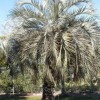 The pindo or jelly palm is a small, single-stemmed, feather-leaved palm widely grown in warmer parts of the US due to its unusual cold tolerance. It is considered hardy down to about 10°F (USDA zone 8A). The palm is slow-growing, eventually reaching 15 to 20 feet, making it suitable for planting under power lines. This 2-page fact sheet was written by Timothy K. Broschat, and published by the UF Department of Environmental Horticulture, February 2014.
The pindo or jelly palm is a small, single-stemmed, feather-leaved palm widely grown in warmer parts of the US due to its unusual cold tolerance. It is considered hardy down to about 10°F (USDA zone 8A). The palm is slow-growing, eventually reaching 15 to 20 feet, making it suitable for planting under power lines. This 2-page fact sheet was written by Timothy K. Broschat, and published by the UF Department of Environmental Horticulture, February 2014.
http://edis.ifas.ufl.edu/st105
Pepper Production in Miami-Dade County, Florida
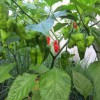 Pepper is an important vegetable crop in Miami-Dade County. Unlike other vegetable crops, peppers are relatively more adaptable to the environment, especially the heat, and are relatively easier to grow. But to be successful, careful attention must be paid to maintain healthy plants and high productivity with efficient management of soil and water for the particular needs of each variety or cultivar. This 7-page fact sheet provides general information and guidelines for pepper growers in Miami-Dade County, including major pepper varieties, and their horticultural traits, and fundamental soil and water management requirements. Written by Qingren Wang, Shouan Zhang, Yuncong Li, Dakshina Seal, Waldemar Klassen, and Teresa Olczyk, and published by the UF Department of Horticultural Sciences, February 2015.
Pepper is an important vegetable crop in Miami-Dade County. Unlike other vegetable crops, peppers are relatively more adaptable to the environment, especially the heat, and are relatively easier to grow. But to be successful, careful attention must be paid to maintain healthy plants and high productivity with efficient management of soil and water for the particular needs of each variety or cultivar. This 7-page fact sheet provides general information and guidelines for pepper growers in Miami-Dade County, including major pepper varieties, and their horticultural traits, and fundamental soil and water management requirements. Written by Qingren Wang, Shouan Zhang, Yuncong Li, Dakshina Seal, Waldemar Klassen, and Teresa Olczyk, and published by the UF Department of Horticultural Sciences, February 2015.
http://edis.ifas.ufl.edu/tr010
Tree Assistance Program for Florida Citrus Greening
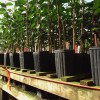 In September 2014, the USDA Farm Service Agency (FSA) announced additional support for commercial Florida citrus growers to manage greening, in the form of an expansion of the Tree Assistance Program (TAP). The original program assisted growers in the event the loss occurred within a single year due to a natural disaster such as a hurricane. The expanded TAP recognizes citrus greening (Huanglongbing, or HLB). The program provides growers cost-sharing financial assistance to replace trees that meet a mortality criterion within a time period of up to six years. This 4-page fact sheet describes eligibility requirements, how the program works, and how to calculate payments. Written by Ariel Singerman and Fritz Roka, and published by the UF Department of Food and Resource Economics, April 2015.
In September 2014, the USDA Farm Service Agency (FSA) announced additional support for commercial Florida citrus growers to manage greening, in the form of an expansion of the Tree Assistance Program (TAP). The original program assisted growers in the event the loss occurred within a single year due to a natural disaster such as a hurricane. The expanded TAP recognizes citrus greening (Huanglongbing, or HLB). The program provides growers cost-sharing financial assistance to replace trees that meet a mortality criterion within a time period of up to six years. This 4-page fact sheet describes eligibility requirements, how the program works, and how to calculate payments. Written by Ariel Singerman and Fritz Roka, and published by the UF Department of Food and Resource Economics, April 2015.
http://edis.ifas.ufl.edu/fe966